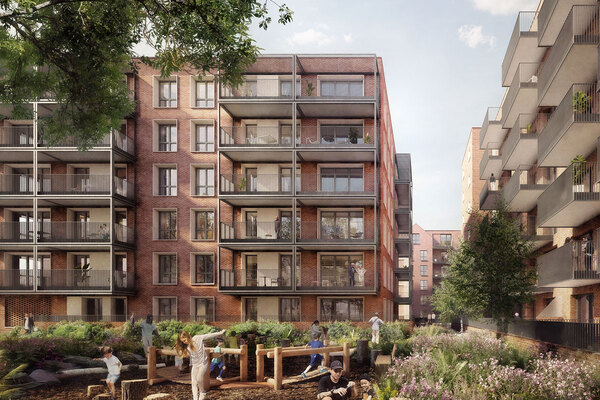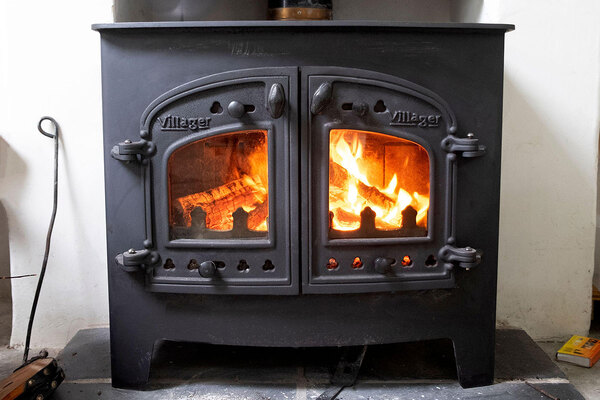New shared ownership – the sector’s view
With changes to the shared ownership model mooted by government, an Inside Housing survey, in association with Winckworth Sherwood, seeks to discover how the new model would affect social landlords
In association with:

Last November, the government released its consultation into a major shake-up of the shared ownership model, with the goal of “helping even more people to realise their ambition of owning their own home”. The changes were in part responding to mounting criticism that the current shared ownership programme has flaws that make it inordinately expensive for buyers.
But an exclusive survey carried out by Inside Housing and Winckworth Sherwood has raised a number of major concerns around how this new model will impact social housing organisations, with the majority of respondents (55%) coming out against the changes (see pie chart, below) and 58% saying it will lead to an erosion in the overall number of affordable homes in the sector.
Additional administrative burdens, questionable financial viability and the creation of a two-tiered market were just some of the issues flagged among participants, of which 71% were housing associations and 21% were local authorities.
The survey was centred around the four main changes to the shared ownership model: a reduction in the minimum equity purchase stake from 25% to 10%; a new gradual staircasing offer of 1% instalments from 10%; an initial 10-year period during which time landlords must pay for essential repairs; and giving shared owners more control when selling their home.
Asked which of these changes would pose the most problems for their organisation, nearly 40% said that having to pay for repairs for the first 10 years of a property is one of their major concerns, with 21% of respondents respectively flagging the minimum equity purchase reduction and the staircasing offer.
Uncertainty in the detail
On the repairs payment obligation, Ruth Barnes, partner and and head of residential development sales at Winckworth Sherwood, believes much of the anxiety among the sector here comes from the current lack of detail surrounding the proposals. “There are lots of questions about the detail of what repairs would be covered – there’s a lot more information needed there,” she says. “It’d be difficult [for organisations] to carry out accurate financial modelling where they don’t know exactly what might be covered by the repairs obligation.”
Sally Kelsall, a participant in the survey and housing strategy and development manager at Warwick District Council, says the administrative burden of the scheme will cause her organisation the most challenges.
“The administrative burden of the whole scheme [is a concern] because you’re going to have to keep on top of who owns what percentages and the house price index that’s being used,” she says. “As for repairs, it’s a new administrative area that we haven’t got at the moment. You’re not getting any fees to cover it, so it’s a role for landlords to accommodate.”
She adds: “It’s open to people just getting receipts from somewhere and submitting them and getting paid for 10 years’ worth of repairs that are or aren’t happening. So how do we then audit that? Do we go out and have a look? It’s a great big area really.”
Her comments chimed with the wider survey results, with 71% of participants saying the changes to staircasing would place pressure on their administrative abilities (see bar chart, below).
One survey respondent said: “Covering these [staircasing administration] costs would mean either reviewing our margins from sales, which could lead to less development, or potentially infringing our charitable objectives by cross-subsidising these costs.”
Despite this, 55% of respondents said they had yet to put plans in place to deal with increased administrative pressure.
However, one survey participant said: “[We’re] anxiously awaiting the operational detail to try and prepare accordingly. [We] cannot plan until we know what the 1% increment means for workload and fees.”
Elsewhere, 63% of respondents envisaged the reduction in the minimum equity purchase creating a two-tier market, hindering their ability to sell shared ownership homes that were built and sold under the old model.
Ms Barnes says housing associations could potentially mitigate the effect of this by buying back the homes and then grant a new lease under the new model to bring the property up to date. But she questions how that would impact the landlord’s obligation to pay for repairs on a property, given that the requirement is supposed to be from the date the property is built, not sold.
“It’d be difficult [for organisations] to carry out accurate financial modelling where they don’t know exactly what might be covered by the repairs obligation”
Restrictions around Section 106 agreements could also hinder landlords, she says. For example, a Section 106 could stipulate that a housing association is able sell only a minimum share of 25%.
The survey also highlighted uncertainty among participants as to how these shared ownership reforms could impact their existing loan agreements, with 17% saying they would and 53% saying it was possible.
When asked whether their funders or lenders seemed concerned by the reforms, a sizeable 26% of respondents said they were.
One respondent said: “The product remains a niche market for mortgage providers and this introduces yet another variation to the detail of the product, which has a history of too many changes of detail. Lenders to [housing associations] are also wary of the security offered by the product and will be more cautious in lending against future schemes.”
Further comments from respondents suggested this may be more of a problem in relation to the proposed right to shared ownership, which will give social tenants (living in new rented homes delivered by the Affordable Homes Programme 2021-26) the opportunity to purchase a stake in their home and then purchase further shares when they can afford to do so.
On this, Ms Barnes says a big take-up of the right to shared ownership could impact a housing association’s security portfolio value.
She says: “Most loan agreements have a limit on the amount of shared ownership properties that will be acceptable as security. It is usually 10% of the value of the whole security portfolio. This is a problem as the government is proposing a right to shared ownership, and if there is a big take-up of that, there will be a problem for registered providers in securing their loans. It’s uncertain at this stage what the view of lenders is to this proposal, or what their view is to the proposal to reduce the minimum amount of staircasing to 1%.”
Sign up for our asset management newsletter
Already have an account? Click here to manage your newsletters













